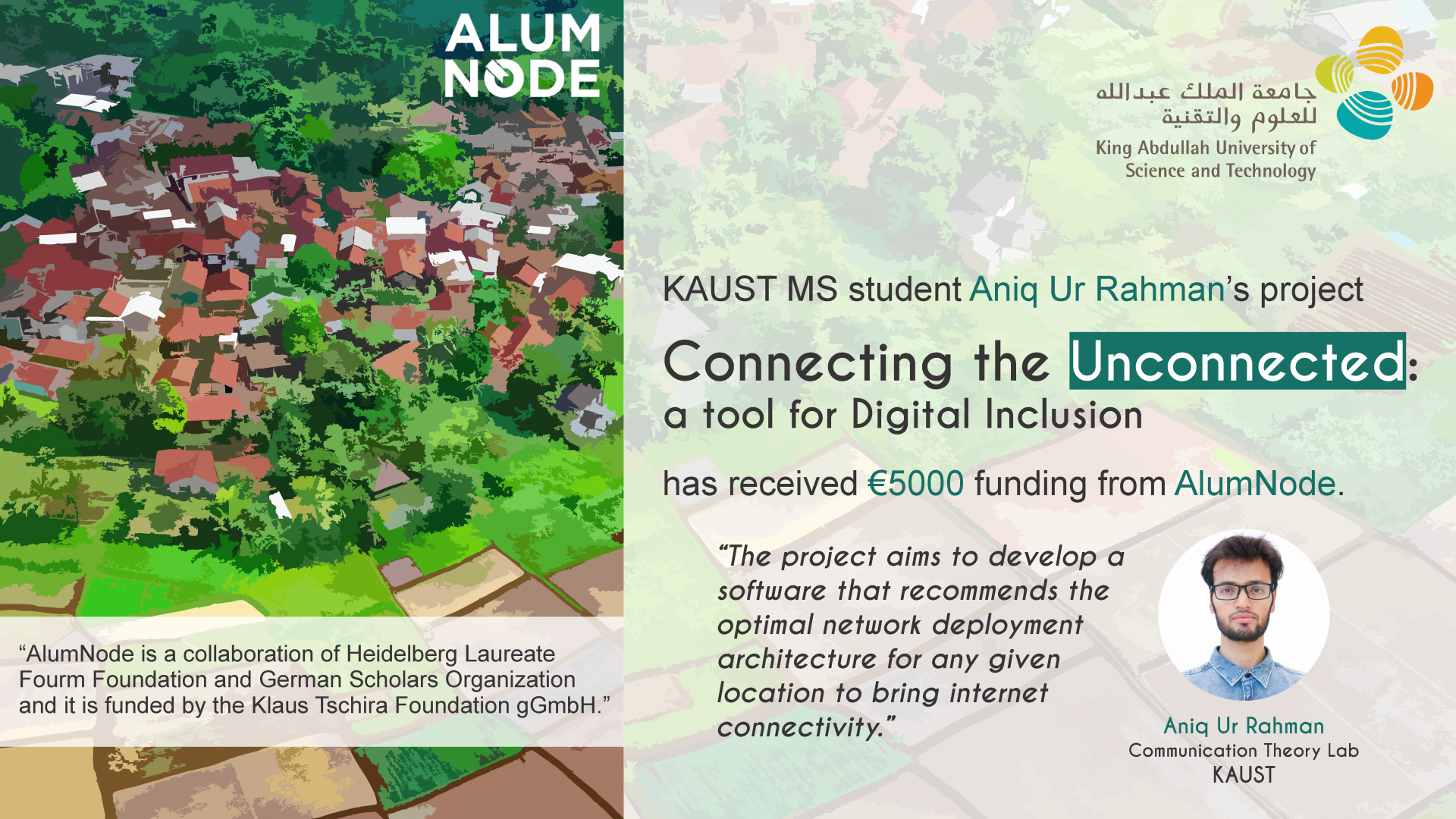KAUST MS/PhD student Aniq Ur Rahman of the Communication Theory Lab, KAUST, received 5000 EUR funding from AlumNode for the project: “Connecting the Unconnected: A Tool for Digital Inclusion”. His team consists of himself, Dr. Anish Jindal from the University of Essex, UK, and Dr. Khac-Hoang Ngo from Chalmers University of Technology, Sweden. All of the team members alumni of Heidelberg Laureate Forum 2019 which made them eligible to apply for the AlumNode funding. AlumNode is a collaboration of Heidelberg Laureate Fourm Foundation (HLFF) and German Scholars Organization (GSO). It is funded by the Klaus Tschira Foundation gGmbH. As an alumni network, AlumNode seeks to empower its members as the next generation of academics and experts to achieve more independence and recognition
The ultimate goal of science and technology is to improve the lives of people all over the world. The discovery of electricity and the consequent success of humans in utilizing it to power machines brought the Industrial revolution. Similarly, the invention of communication systems and finally the Internet, connected different parts of the world and ushered in the Digital Age. However, the networks are not distributed fairly. Urban and wealthy populations reap the maximum benefit, while people living in rural and remote areas or those who cannot afford the technology, lag behind. This is what is referred to as the Digital Divide and the steps taken to reduce this digital gap, are part of the noble Digital Inclusion initiative.
In this context, this project aims to develop a software that recommends the optimal network deployment architecture for any given location to bring internet connectivity. The deployment architecture will be optimized for several parameters such as feasibility, affordability, energy-efficiency, and scalability. The location is analyzed to extract relevant features such as terrain description, height from sea-level, average weather conditions, population distribution and its proximity to a major city. The recommended network architecture can be an amalgamation of different types of networks, or multiple networks complementing each other. For example, the network might consist of free space optical links, TV white space towers, WiFi access points, and fiber connections based on the features associated with the region.


